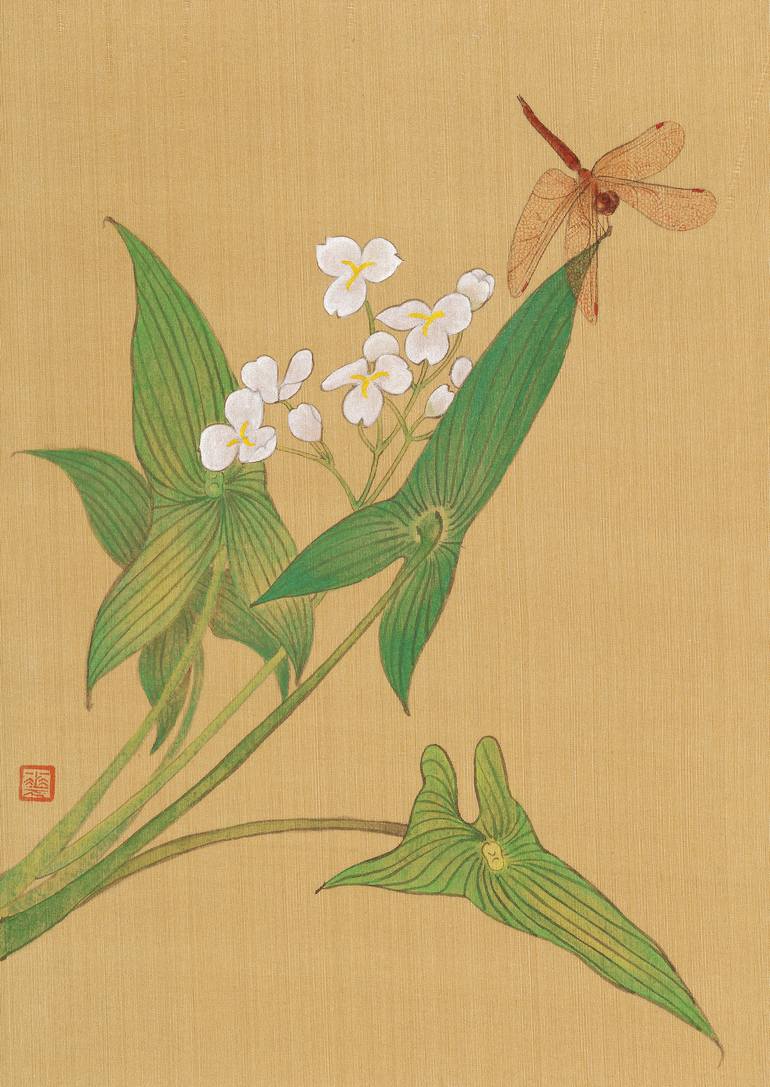


154 Views
17
View In My Room
Painting, Ink on Paper
Size: 8.3 W x 11.8 H x 0.1 D in
Ships in a Crate
154 Views
17
Artist Recognition

Artist featured in a collection
ABOUT THE ARTWORK
DETAILS AND DIMENSIONS
SHIPPING AND RETURNS
Heaviness wrapped up with Lightness – Reading Kim HyunJung’s painting Lee DongChun (Fine art Connoisseur) Kim HyunJung’s paintings are cute and interesting. Her painting reminds us of paintings by Qi Baishi 齐白石 (1864-1957). Qi Baishi pursued beauty in his life, and his artistic spirit is found in ...
Year Created:
2018
Subject:
Mediums:
Multi-paneled Painting, Ink on Paper
Rarity:
One-of-a-kind Artwork
Size:
8.3 W x 11.8 H x 0.1 D in
Number of Panels:
2
Ready to Hang:
Not Applicable
Frame:
Gold
Authenticity:
Certificate is Included
Packaging:
Ships in a Crate
Delivery Cost:
Shipping is included in price.
Delivery Time:
Typically 5-7 business days for domestic shipments, 10-14 business days for international shipments.
Returns:
14-day return policy. Visit our help section for more information.
Handling:
Ships in a wooden crate for additional protection of heavy or oversized artworks. Artists are responsible for packaging and adhering to Saatchi Art’s packaging guidelines.
Ships From:
South Korea.
Need more information?
Need more information?
Hyunjung Kim
South Korea
HyunJung Kim(金賢靜) is a Korean artist whose work bridges traditional East Asian painting and contemporary psychological introspection. Originally trained as an actress, she transitioned into painting through a deeply personal healing process. Her recurring motifs—Lala, a doll representing the inner child, and the dragonfly, a symbol of memory—serve as mirrors of the self and as vehicles for emotional transformation. Her painting technique merges the delicacy of gongbi (fine brushwork) with bold color fields and unconventional composition, reminiscent of Qi Baishi and Li Keran. Kim incorporates embroidery directly into her silk paintings, creating a unique method she calls “painting-led, embroidery-enhanced” (畫主繡補), pushing the boundaries of traditional mediums. By combining symbolism, self-reflection, and performative role-play, her work forms a new kind of literati painting—21st-century xin wenrenhua—garnering attention from both art historians and contemporary collectors across Asia. In 2014, Kim participated in a major three-artist exhibition at Today Art Museum in Beijing, where she exhibited alongside legendary media artist Nam June Paik. In Korea, her works are part of both institutional and private collections, including those of LS Groups and Donghaeng Lottery.
Artist Recognition

Artist featured by Saatchi Art in a collection
Why Saatchi Art?
Thousands of
5-Star Reviews
We deliver world-class customer service to all of our art buyers.
Global Selection of Original Art
Explore an unparalleled artwork selection from around the world.
Satisfaction Guaranteed
Our 14-day satisfaction guarantee allows you to buy with confidence.
Support Emerging Artists
We pay our artists more on every sale than other galleries.
